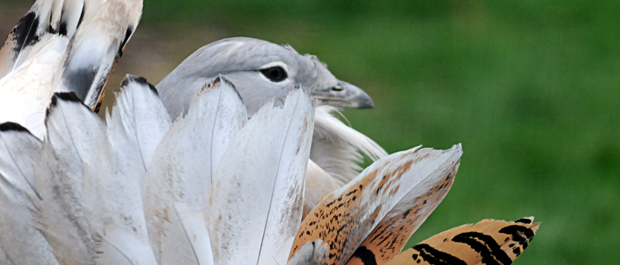Great Bustard
The birds can reach 3ft tall and can have a wingspan of more than 8ft.

The birds were hunted to extinction in Britain in the early 19th century but they were once a common sight. They could be found on chalk downland in central southern England and in the open sandy Brecklands of eastern England but they were an easy target and the last bird in the UK was shot dead in 1832.
The Latin name for The Great Bustard is Otis tarda and the reintroduction of the species to the UK is a remarkable achievement . The conservation status of the Great Bustard is ‘vulnerable’ and populations in many countries are in decline and the Wiltshire birds will help to conserve the species as a whole.
The first birds released in Wiltshire were rescued and reared in southern Russia by the Great Bustard Group after the parent birds were accidentally killed. Transported to the UK, they were quarantined and then released at a secret location on Salisbury Plain. More joined them in the following years.
The first native chicks hatched in 2009 and it is hoped that the population will become significant in numbers.
To find out more about the Great Bustard, visit greatbustard.org.